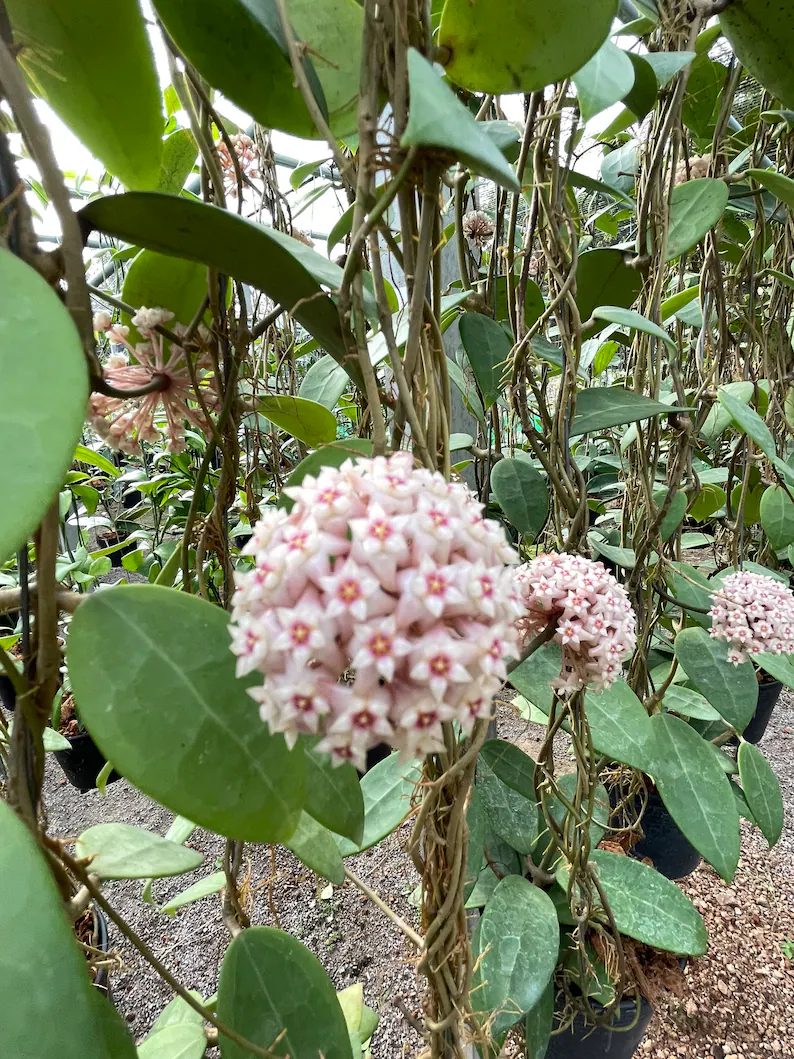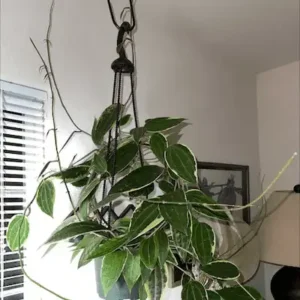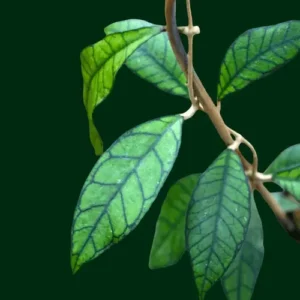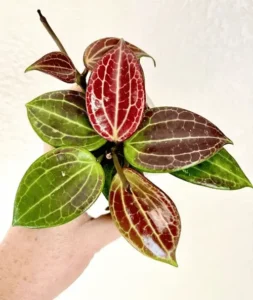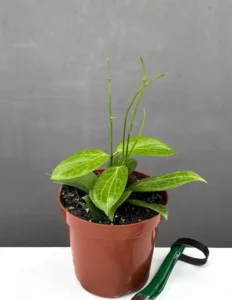In this guide, all the Main Features of the Hoya Plants are discussed briefly. The Main Features of the Hoya Plants include uses/benefits, symbolism, varieties, and different tips for blooming, flowering, and reporting these wax plants. However, a brief description of these features should be known by the hoya plant’s hobbyists.
In this article “Main Features of the Hoya Plants“, the following topics are covered Hoya plant (wax plant) i) Uses/benefits ii) Symbolism iii) Best hoya plants iv) Best common indoor hoya plants -Hoya plant varieties -Hoya plant propagation -Hoya plant flowering, blooming, and reporting tips -Insects, diseases, and other common problems with hoya plants -Ultimate care guide for hoya plants |
Hoya plant (wax plant)
The Hoya plant (wax plant) is an Asian native plant with fragrant, low-maintenance tropical flowers that grow in a ball-shaped cluster. Most are native to several countries of Asia such as the Philippines, India, Thailand, Malaysia, Vietnam, Bangladesh, Indonesia, Polynesia, and New Guinea, and many species are also found in Australia. Hoya plants are also native to tropical and subtropical areas worldwide. Hoyas are widely cultivated for their pungent bloom and unique vegetation. Spring and summer are growing seasons for propagating the hoya plant.
Uses/ benefits
- Natural air purifier powerhouse
- The Hoya plant is a natural air purifier powerhouse, absorbing pollutants like benzene and formaldehyde.
- It has high elegance with low maintenance thrives with minimal care and adds an antique look.
- It is also considered a symbol of love and peacefulness, ideal gift, and tension relief confederate.
- With its thick and waxy leaves, it traps indoor air pollutants to ride out.
- Due to its timeless elegance long slender vines and deep green leaves, it’s a living sculpture that complements any decor style and plays an important role in interior design.
- The wax plant also offers architectural flexibility whether it is climbing a trellis.
- The Wax Plant changes at night, and its blooms begin to smell delicious. This delicate yet alluring fragrance elevates your home’s sensory experience, making it an ideal option for living areas or bedrooms where unwinding is essential.
- The Hoya (plant) has anti-inflammatory properties that make it beneficial for those who have exterior wounds. The Hoya plant can both speed up skin healing and shield it from external aggressors.
- Hoyas are excellent houseplants for novices as well as avid gardeners. They also add antique and modern style to your home. This is one of the Main Features of the Hoya Plants.
- Despite its health advantages, it is ideal for pet-friendly homes since it may be a wonderful addition to your house.
Symbolism
As hoya plant is known for its waxy leaves and star-shaped flowers which symbolize everlasting affection, protection, and spiritual clarity. In particular, hoya kerrii ( hoya heart) with its single heart-shaped leaf indicates profound love and stress relief. It also symbolizes a gift of beauty and hope, its dazzling flowers offer a message of faithful love and admiration. It is also a symbol of lasting power due to its catchy-eye look. Hoya creates a feeling of stillness through which you can hear the quieter calls of living-inward exploration, spiritual enlightenment, and Divine alignment.
Best hoya plants
Best hoya plants provide aromatic blooms and stunning looks. A list of these hoya plants is as follows.
| Hoya kerrii | Hoya carnosa | Hoya compacta “hindu rope” | Hoya burtoniae |
| Hoya obovata | Hoya carnosa “krimson queen” | Hoya punicalyx | Hoya wayetii |
| Hoya bella | Hoya macrophylla | Hoya bhutanica | Hoya caudata |
Best common indoor hoya plants
The best common indoor hoya plants are beautiful beginner-friendly hoyas that you can grow at home. A list of these common houseplants is as follows.
| Hoya carnosa tricolor | Hoya australis | Hoya obovata | Hoya kerrii |
| Hoya compacta” hindu rope” | Hoya bella | Hoya carnosa “ krimson princess” | Hoya linearis |
| Hoya macrophylla | Hoya mathilde | Chelsea | Hoya shepherdii |
Hoya plant varieties
Different hoya plant varieties showcase the beauty and diversity in a genus of over 500 accepted species of tropical plants in the dogbane family, Apocynaceae.
Here is the list of these varieties.
Family: Apocynaceae
Order:Gentianales
Kingdom: Plantae
| Varieties | Botanical name | Common name | Native |
| Hoya carnosa | Hoya carnosa | wax plant, wax flower, porcelain flower | East Asia and Australia |
| Hoya kerrii | Hoya kerrii | Sweetheart Hoya, Heart-shaped Hoya, Heart Leaf, Valentine Hoya, Valentine Wax Plant, Wax Hearts | Southeast Asia |
| Hoya obovata: | Hoya obovata | Hoya obovataWax plant | Parts of Asia , Indonesia, and the Himalayas |
| Hoya krimson queen | hoya carnosa, krimson queen | wax plant, wax vine, porcelain flower, hanging plant, multicolored leaves plant | East Asia and Australia |
| Hoya Australis | Hoya australis | wax vine or common wax flower | Australia and parts of East Asia |
| Hoya curtisii | Hoya curtisii King & Gamble | Fung wax flower | Southeast Asia across Thailand, the Philippines, Borneo, and Malaysia |
| Hoya pubicalyx | Hoya pubicalyx | pink silver, porcelain flower, silver pink vine | Philippines |
| Hoya hindu rope – hoya compacta: | Hoya carnosa | Hindu rope plant, Porcelain flower, Krinkle Kurl, Wax plant | East Asia and Australia |
| Hoya bella | Hoya bella | beautiful hoya, waxflower, or pretty waxflower | Tropical rainforests of South Asia, India, Thailand, and Burma |
| Hoya linearis | Hoya linearis | Wax plant,procelain flower,miniature wax plant,hoya carnosa, waxvine | Nepal and China |
| Hoya wayetii | Hoya wayetii | Wayetii wax plant | Philippines |
| Hoya macrophylla | Hoya macrophylla | Waxplant, wax flower,waxvine | Vietnam, Borneo |
| Hoya carnosa krimson princess | Hoya carnosa | wax flower, porcelain flower, hoya Rubra | East Asia and Australia |
Hoya carnosa
Description
Hoya carnosa, commonly known as the wax plant or porcelain flower, is a popular houseplant known for its thick, waxy shiny green leaves with deep red stems and unique aromatic appearance. It belongs to the Apocynaceae family and is native to East Asia and Australia.
Key Features
Here are the main key features of hoya carnosa.
-The leaves are thick, waxy, and typically dark green, though variegated varieties exist with white, pink, or yellow edges.
-The plant produces clusters of small, star-shaped flowers that are usually pink or white with a red center. Moreover, these flowers are fragrant, especially in the evening, and produce a sweet, nectar-like substance.
-Hoya carnosa is a climbing or trailing vine, making it suitable for hanging baskets or a climbing plant on a trellis. This is one of the main features of the hoya plants.
-Hoya carnosa is a favorite among plant enthusiasts for its attractive appearance and relatively easy care.
Hoya Kerii
Description
Hoya kerrii, commonly known as the sweetheart plant, valentine hoya, or heart-leaf hoya, is a popular succulent vine known for its distinctive heart-shaped leaves. It’s often given as a romantic gift due to the unique shape of its leaves. it is also sometimes named a lucky-heart plant.it is a thick, succulent-like tropical vine that is easily identified by its heart.
Key Features
Here are some Main Features of the Hoya Plants kerrii , discussed.
-The most striking feature of Hoya kerrii is its thick, fleshy, heart-shaped leaves. These leaves are usually dark green, although variegated varieties with white or yellow margins are also available.
-Another distinctive feature of hoya kerrii is the fishtail leaf shape which makes it more romantic and beautiful.
-Hoya kerrii is a slow-growing vine that can be grown as a trailing or climbing plant. It’s often sold as a single leaf cutting, which can root and eventually grow into a full plant, although the process is slow.
-Like other Hoya species, Hoya kerrii can produce clusters of small, star-shaped flowers known as umbels. The flowers are usually creamy white with a pink or red center and are fragrant, especially in the evening. However, it may take several years before a young plant blooms.
-Hoya kerrii is adored not only for its unique appearance but also for its symbolism and ease of care.
Hoya Obovata
Description
Hoya obovata is a popular species of the Hoya genus, known for its attractive, round leaves and ease of care. Like other hoyas, it is a vining plant and is often grown as a houseplant due to its ornamental vegetation and occasional blooms. Hoya obovota is identified by its large, deep green silver-speckled oval leaves.
Key Features
-The leaves of Hoya obovata are thick, succulent, and typically round or slightly oval (obovate) in shape. They are dark green with lighter speckling or flecks, giving them a distinct appearance. The leaves are smooth and waxy. It can grow quite large compared to other Hoya species.
-Hoya obovata is a climbing or trailing vine, making it ideal for hanging baskets, trellises, or being trained to grow along supports. It is a fast-growing Hoya compared to others in the genus. This is one of the main features of the hoya plants.
-The plant produces clusters of small, star-shaped flowers, typically pink or pale purple with a darker center. The flowers are fragrant and produce a sweet, nectar-like substance. Hoya obovata is known for its reliable blooming when given proper care.
-Hoya obovata is cherished by plant enthusiasts for its beautiful, robust leaves and its ability to thrive with minimal care. It’s a great choice for both beginners and experienced plant lovers looking for a striking, low-maintenance addition to their collection. Each hoya obovata has a unique personality, no two plants have the same pattern.
Hoya carnosa ‘Krimson Queen’
Description
Hoya carnosa ‘krimson queen’, is a houseplant that is attractive and low maintenance with colorful vegetation and fragrant pink blooms. its thick succulent foliage has a dark blue-green center edge in pink or white.new leaves are often very bright pink and some leaves can be entirely white.
Key features
-This stunning plant has the most distinctive feature, heart-shaped leaves with a pointed tip as well as a combination of green and creamy-white patterns that will catch your eye.
-It is best known for its striking variegated foliage.
-The green leaves with creamy white and pink shades make a beautiful contrast.
-It is a cultivar of the hoya carnosa, the most popular species among hoyas. This is one of the main features of the hoya plants.
The leaves of this popular variety are most famous for their variegation.
Hoya Ausrtalis
Description
Hoya australis is a type of hoya plant that is best known for its fragrant white flowers, rounded oval-shaped leaves, and long climbing vines.it is one of the species among hoyas.it is mostly found in eastern and northern Australia.
Key features
-This houseplant is easy to grow, moderately vigorous climbing species.
-It is also known as waxvine or common waxflower due to its waxy leaves.
-It has Thick, almost round dark green leaves, particularly felted on the underside and measuring up to 90mm across. This is one of the main features of the hoya plants.
-This plant is also a greenhouse-grown which means it needs to be coveted and filter light. This is one of the main features of the hoya plants.
-Its green leaves have a splash of color, with a bright yellow and softer green coming from the center of each leaf.
Hoya Curtisii (miniature plant)
Description
Hoya curtisii is a miniature trailing hoya. This form of curtisii has small round olive-green leaves mottled with grey. It is also known as the ‘Hoya Tiny Leaf Porcelain Flower’ and has sparkly silver colors on the green leaves.it is a tropical epiphyte that is adapted to growing in humid jungles. In the wild places, you would see mounds of hoya curtisii. It is smaller than other typical hoyas.
Key features
-It is native to the Philippines, Thailand,Borneo, and Malaysia, this petite hoya is a testament to the rich biodiversity of its tropical habitats.
-It is a climbing epiphyte or lithophyte and grows primarily in the wet tropical biome.
-It has small, fleshy leaves speckled with silver—a true spectacle of nature. It’s particularly noted for its trailing vines which make it an ideal candidate for hanging baskets or as a tabletop display with a cascading arrangement. This is one of the Main Features of the Hoya Plants which you should keep in mind.
-This mini plant blooms with clusters of star-shaped, pale pink flowers that emit a light, pleasant fragrance, adding a touch of elegance and charm to any indoor space.
Hoya Pubicalyx (storyteller plant)
Description
Hoya pubicalyx (storyteller plant) is a captivating species among the genus of Hoya. It is widely appreciated for its stunning flowers and decorative foliage. It is native to the Philippines and is sometimes confused as a hoya carnosa. this wax plant is an epiphytic herbaceous perennial in the dogbane family (Apocynaceae). It is also called a succulent vine. Its dark green leaves are subtly mottled with grayish, silvery specks that look quite beautiful.
Key features
-It grows in a tropical rainforest.
-It is also kept as a houseplant in a temperature climate and can be found in variegated forms in nurseries.
-This species has the most attractive silver-flecked leaves and aromatic showy flowers which make a garden full of beauty and adversity. This is one of the main features of the hoya plants.
Hoya Hindu Rope – Hoya Compacta
Description
Hoya hindu rope- hoya compacta is a curly – leafed version of the more common hoya carnosa.this simi- succulent, vine-like species is best known for its waxy foliage This houseplant has beautiful flowers with curling vine-like leaves.
Key features
-The leaves of this houseplant are waxy, wrapped, and tightly packed along the hanging stems.
-Like other hoyas, this plant also produces star-shaped flowers which make it a charming houseplant.
-One of the most striking features of this is its unique color, shape, texture, and curly leaves. However, these curly leaves give it a unique appearance.
Another striking feature is its helix and rope-like leaves arranged in opposite pairs.
This houseplant takes time to grow and the gardener needs to be patient.
Hoya Bella
Description
Hoya bella, also known as the beautiful waxflower or wax plant is renowned for its delicate, cascading vines adorned with small, lancelike, and glamorous green leaves. It is an asclepiad species of flowering plant in the dogbane family, Apocynaceae.
Key features
-This tropical epiphyte has pouring spear-shaped stems with razor-edged and furry leaves.
-The most alluring feature of this hoya is the flowers which come easily. From the tip of the stem, five thick, waxy petals emerge in the shape of a star, each with a deep pink color and a pleasant scent.
-About 1 to 1.5 cm long stems support the perennial leaves. In addition, the blade is a heart-shaped, broad oval, or longitudinal oval. The leaves have a glossy, waxy surface and are semi-sucrose.
Hoya Linearis
Description
Hoya linearis is a rare hoya, native to Northern India’s Himalayas. Hoya linearis does not climb as much as other plants in the genus. It grows instead in the cracks and nooks of trees, hanging lovely from their limbs.
Key Features
-The leaves are narrow, and tiny faint fuzz covering them. Moreover, blooming in clusters, these white, star-shaped flowers have a lovely lemon scent.
-It is reputed to be one of the most difficult hoyas to cultivate. Although, it is extremely sensitive to overwatering, it must be kept in a humid atmosphere. This is one of the main features of the hoya plants.
-A barrage of soft and lumpy tendrils makes the linear porcelain plant another trailing triumph for Hoyas.
Hoya Wayetii (wax plant)
Description
Hoya wayetii is an epiphytic succulent that tends to trail. This species, which prefers dampness, creates lovely tiny clusters of mauve flowers.it is sometimes confused with hoya kentiana or hoya shepherdii.
Key features
-The distinctive feature of this plant is its thick, deep green leaves, which, with sufficient light, turn crimson at the edges. Seek for the variegated variety, whose leaves have a remarkable yellow-white pattern. This is one of the main features of the hoya plants.
-They’re ideal for arranging on shelves or hanging baskets because of their trailing habit. If let to develop, the tendrils can attain a maximum length of three feet. The hoya wayetii (wax plant) is a humidity-loving plant that thrives in well-lit bathrooms.
Hoya Macrophylla
Description
Hoya macrophylla is a vining plant that produces clusters of fragrant, galaxy flowers, adding stunner and a sweet fragrance to any indoor space. Since the species’ name means “large leaved” and has distinctive veins, it has a relatively enormous leaf for a hoya.
Key features
Leaves can grow about 3 inches wide and 6-8 inches long.
In comparison to other hoyas, Hoya macrophylla, as its name implies, grows unusually huge leaves.
It has large variegated leaves with white and pinkish margins.
Hoya Carnosa ‘Krimson Princess’
Description
Hoya carnosa ‘Krimson Princess’ has vivid green leaves that are accented with creamy white to pink variegation in the centers, which contrasts with the green borders.it’s originally from East Asia and Australia. Moreover, the species of Hoya carnosa thrives in tropical and subtropical environments, clinging to trees and rocks in its natural habitat.
Key features
-Hoya carnosa ‘krimson princess’ is a succulent vine that can grow upwards gracefully with the support of hanging baskets. Additionally, it is a stem-rooting climber. It is adaptable, developing as an indoor potted plant and an outdoor enduring plant in warm climates.
-This plant is renowned for its beautiful star-shaped flower blooming in clusters. these waxy, porcelain-like flowers are red-centered with pale pink and emit a sweet fragrance in the evening especially. However, flowering may take several years to bloom.
-Hoya carnosa ‘krimson princess’ is used as a hanging basket, container, and paved area of a garden. Moreover, it is mainly used in Mediterranean gardens. It is a natural air purifier, that maintains a good quality of indoor environment conditions by removing pollutants.
Hoya plant propagation
There are four ways to propagate the hoya plant, two are difficult and two are quite easy.
Propagation by seeds
-It can be challenging to locate fresh Hoya seed, which also takes a long time to germinate. This is the most labor-intensive method of propagation.
Propagation by leaf-cuttings
-The second way to propagate is leaf cutting. The leaves start to root after 5 or 6 weeks and sometimes you have to wait a full year. If your hoya is starting growing use this method, otherwise reject it.
Propagation by stem- cuttings
-Make sure you take your cuttings from softwood. Always take cuttings at an angle using clean, sharp pruners used a popsicle-making container (fancy propagation equipment!)for the rooting because it held the leaves up above the rim.
-Keep water in the container just above the bottom node and when the roots appear, make sure they’re covered too and remove all leaves, those at the top of shorter stem cuttings (no more than 1, 2, or 3 nodes) while rooting in a mixture.
Propagation by layering
This is not air layering, a completely different method of propagation. All you have to do is take a softwood stem of the plant that is still linked to the mother and pin it into a light mix pot. Moreover, ensure that all of the mixture has been soaked. Typically, tiny roots will start to show up on the stems; these are the roots you want to add to the mixture.
Just pin down the softwood stems and you’ll notice the roots if you can’t see them. use stems that are no longer than 12 inches, and fit up to 5 of them in a 4-inch container. Don’t let the mixture dry up by placing it in bright light (avoid direct sunlight). It’s worth noting to utilize greening or flowering pins. For training topiaries, creating wreaths, arranging flowers, and keeping down cuttings, they’re fantastic.
Hoya plant flowering, blooming, and reporting tips
Hoya plant flowering and blooming tips
Provide the right conditions
-The foliage of hoya plants is gorgeous and when you get flowers it’s very special. if you want to get your hoya to flower, provide the right conditions for blooming. Sometimes market -nutrients also matter.
Light requirements
-Sometimes hoya is not blooming due to not enough light, so if nothing else, just increase the brightness of light to unlock the hoya to bloom.
Provide Cold periode
-Stress is good for flowers as it encourages blooms such as cold periods or bare patches. Popular hoya carnosa often require a short dry period to trigger flowering such as a month of drying out.
-If your hoya is not growing leaves, stay on a good vegetation fertilizer. Provide the best food at the right time.
Improve the underlayers
-Improving the underlayer is often suggested if your hoya is not blooming.
Don’t remove hoya flowers after blooming
-Don’t remove hoya flowers after blooming, they will drop off themselves. However, it’s necessary to leave the peduncle on.
Bud blast solutions
If your hoya buds dry up or die without flowering (bud blast). There are many possible fixes for it that you should follow.
-First, keep conditions the same.
-Secondly, change fertilizer ( shifting from a nitrogen-rich foliar fertilizer to a bloom fertilizer is usually recommended). Moreover, for flowers to bloom, several minerals are needed. A plant’s attempt to blossom may be hampered or interrupted if foliar fertilizer is continued.
-Thirdly,check your choice of fertiliser and the dilution rate for foliar feeding, several collectors have reported success when applying their bloom fertiliser as a foliar spray to promote blooming.
-Fourthly, bud blast is also due to calcium deficiency, even though it’s an important nutrient for hoyas. However, check your fertilizer label as most people don’t check it.
-Fifthly, Buds may die due to becoming overly dry or remaining too long dry. Turn up the watering a little bit instead of overhead watering.
-Sixthly, grab a hygrometer to check the temperature and humidity as it’s necessary for better growth. It depends upon your hoyas preferences.
-Lastly, time and temperature are also essential. Give a proper time to grow as some hoyas take less time to grow from blooms to flowering and some take too much time. Temperature range is also important check temperature lows and highs and if suitable grab a thermometer to keep an eye on conditions.
Hoya plant reporting tips
Give your plant a chunky mix
-While reporting, give your plant a chunky mix. By doing this you will always retain your hoya.
-Just disturb your hoya as little as possible. However, don’t bash the old dirt off, just drop it in the new pot backfill it with your latest mix, and let it grow.
Doesn’t get all the soil out
-While reporting doesn’t get all the soil out, it will be problematic as hoyas hate their roots being disturbed and root rot is always a risk. Additionally, If you think that old soil will kill them. In this case, get out soil otherwise don’t take risks.
Leave the hoya plant to harden off and confine
-When you get a plant, leave it to harden off and confine, and see if it’s happy. In case, if it’s growing, don’t report it unless required. After one month if you notice that it stops growing, in that case, get out all the soil, wash or rub the pot with alcohol or some other detergent, and try to be very careful with the roots.
Other cases of hoya reporting
-In another case, if you don’t want to disturb your hoya then just pot up the size or try to get the soil off the roots.
-If you see the roots coming out of the pot or through the drainage holes and if the plant is drinking water too quickly. In this case, report.
Insects, diseases, and other common problems with hoya plants
Here is the list of insects, diseases, and other common problems related to hoya plants:
Dark spots
Dark spots on the leaves are fungal infections caused by overwatering might be caused by temperature fluctuation. Moreover, the plant was harmed by these dark patches as they progressively formed.
Aphids, spider mites, and mealybugs
The hoya plant is often harmed by mealybugs, spider mites, and aphids. Moreover, root rot may result from the container holding too much water if the plant is not kept root-bound. Additionally, overwatering may prevent the plant from flowering.
Thinning, brown, or wrinkled leaves can mean that the plant is allowed to dry too much between watering.
Mold and fungs
-Mold and fungus which are the silent invaders discoloration or powdery spots on leaves are also common problems. However, it is also susceptible to a range of common ‘sap-sucking’ houseplant pests including aphids, mealybugs, scale and spider mites.
– Additionally, hoya fungal leaf spots and other fungal or bacterial diseases commonly affect this type of plant which is caused by brown spots on the leaves.
Root rot
-Root rot is a common disease caused by overwatering and poor drainage.
Yellow or wrinkled leaves
-Leaves turning yellow due to overwatering and lack of light.
-Wilted, wrinkled, or shriveled leaves are frequently signs of a serious water deficit. Moreover, water your plant adequately to ensure healthier development in the future.
Other common problems
-Yellowing, leaf spots, excess water on top leaves, sooty mold (develops on the leaves’ sugary, sappy leftovers), light and temperature angles, scale insects, pests. Moreover, root rot is a silent killer and occurs when the soil is too moist.
-Among the insects drawn to these species are whiteflies. Additionally, root rot and leaf drop can result from overwatering. These are all the common “sap-sucking” insects in the garden.
-Caterpillars, spider mites, leafhoppers, yellow edges, dark blotches, leaf beetles, mealybugs, thrips, and aphids are also common problems.
Ultimate care guide for hoya plants
Although hoya plants are relatively low-maintenance houseplants, they can suffer from some common issues, including pests, overwatering, underwatering, and low humidity. Many problems can be avoided by closely monitoring their environment and care requirements. However, recognize issues early on and make changes to restore your hoya’s health. Moreover, hoyas create lovely, blooming houseplants when given the proper care.
General tips for caring for the hoya plant
Here are some general tips, for caring for hoya plants.
Choose the suitable pot
-First, choose the right pot which is very important, regular plastic containers are best. Moreover, choose a manageable pot according to the hoya size.
-Secondly, choose the material that draws moisture from the soil as hoyas are badly affected by overwatering and root rot.
Prevention from leaf spots, dark spots, and root rot
-To prevent leaf spot infections, avoid overwatering, ensure the plant has good air circulation, and keep leaves as dry as possible. However, maintain proper pruning of your shrubs and trees to allow for adequate canopy ventilation.
-In case of dark spots apply cinnamon and other fungicides, minimize watering, and let your plant grow. However, for better growth, longer watering intervals are a must for these beautiful houseplants.
-Make sure the soil drains well and the plant isn’t overwatered to avoid root rot.
Preventing leaves from wrinkling, yellowing, and falling off
-To prevent yellowing, wrinkling, or dropping off leaves and scale insects, isolate the plant and spray it with fresh water and rubbing alcohol.
-To avoid yellowing or wrinkled leaves, the best way is to water the plant moderately.
-Provide enough humidity and light to your houseplant for enough growth.
– Moreover, bright and indirect sunlight is beneficial for blooming this plant.
-If you place this plant in a place where direct bright sunlight comes, leaves will automatically turn yellow.
-To avoid all the above issues, replace the soil with fresh and clean soil. Moreover, once you have thoroughly cleaned the plant, it will automatically grow better.
Prevention from mold and fungus diseases
-In case, if mold and fungs affect the hoya, cover and scrub the affected area with bleach, a fungicide, a detergent, or water and then dry it.
-Before remodeling, remove any residue from the cleaning chemical mixture and thoroughly dry the surface where the houseplant is kept.
-Use air conditioners and dehumidifiers to lower the amount of moisture in the air. Moreover, keep the humidity inside your home at or below 60%. However, Insulate cold surfaces including windows, floors, and outside walls to lessen condensation.
-Dry damp areas in a day or two to prevent the growth of mold.
Prevention from aphids, mealybugs, and spider mites
-Use neem oil, check plants frequently, keep leaves clean, apply rubbing alcohol, steer clear of overwatering, and introduce natural predators to ward off aphids, mealybugs, and spider mites.
-Aphid infestations can be avoided by maintaining target plants well-watered, fertilized, and healthy, as well as by eliminating host weeds and neglected stressed plants. However, aphid infestations originate locally, aphids can be sprayed with organic garlic and chili sprays, squished with fingers and thumb, or eliminated from plants with a water jet.
-Most “soft” insecticides and biological agents, which are easily accessible to home gardeners, can be used to control mealybugs.
–Leptomastix dactylopii and Anagyrus fusciventris are parasitic wasps that can be released into an affected area to suppress mealybug populations effectively.
| FAQs ” Main Features of the Hoya Plants” How do you take care of a Hoya flower? Maintain a humidity level below 60% with stable room temperatures of 60°F and 85°F(16°C – 29°C). Provide bright, indirect sunlight. To prevent mold and fungus cover and scrub the affected area with bleach, a fungicide, a detergent, or water and then dry it. Are hoya plants poisonous to cats and dogs? No, the hoya plants are not poisonous to dogs and cats, just love and treat them as regular houseplants. They are pet-friendly. How often to water the hoya plants? Although they enjoy being wet, hoya plants also prefer to be dry at the same time. After giving the soil a thorough watering, allow it to dry up before applying more water. However, during flowering, they require more water. |
Conclusion
In conclusion, hoya plants are beautiful beginner-friendly hoyas that you can grow at home. These wax plants are best known for their waxy leaves and star-shaped flowers which symbolize everlasting affection, protection, and spiritual clarity. The main features of the Hoya plants are natural air purifier powerhouse, absorbing pollutants like benzene and formaldehyde. Moreover, they have high elegance with low maintenance thrive with minimal care, and add an antique look.

